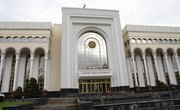A school district consists of administrators and educators responsible for ensuring students' academic success. To ensure effective decision-making, local districts designate responsibilities to specific personnel. The superintendent manages the district's affairs in collaboration with elected school board members, department heads and building principals. Depending on his district's size, the superintendent handles most executive functions himself or delegates them to other middle-level managers.
Board of Education
Elected school board members make district policy by voting at weekly or monthly meetings, where they review budget, educational, facilities and personnel matters. Other key responsibilities include curriculum changes, new construction projects and property purchases. The board also hires and evaluates the superintendent -- and other school employees -- for whom it negotiates collective bargaining agreements.
Superintendent of Schools
A superintendent is the district's educational leader and spokesman. In large urban areas, he works with an extended management team to achieve district goals. For example, Buffalo Public Schools' administration includes a deputy superintendent and three assistant superintendents, plus a chief financial officer, controller, legal counsel and intelligence technology director. The superintendent supervises each manager's activities within district policy guidelines.
Principals and Teachers
School boards, superintendents and managers work closely with building principals, who are the main instructional leaders. The principal, in turn, ensures that teachers meet state educational standards and school improvement plan objectives. He also oversees professional development activities and performance evaluations for teachers and other instructional staff.
Related Articles
References
Writer Bio
Ralph Heibutzki's articles have appeared in the "All Music Guide," "Goldmine," "Guitar Player" and "Vintage Guitar." He is also the author of "Unfinished Business: The Life & Times Of Danny Gatton," and holds a journalism degree from Michigan State University.











